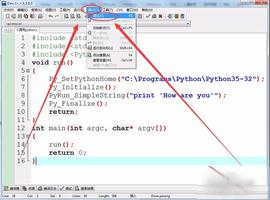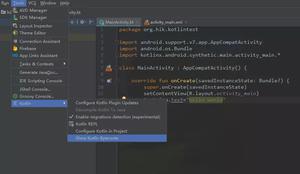如何使用plot_grid放置没有任何空间的地块?
我正在做一个2x2图的安排。这些图共享相同的轴,所以我想把它们放在一起,例如,如何使用plot_grid放置没有任何空间的地块?
此代码:
library(ggplot2) library(cowplot)
Value <- seq(0,1000, by = 1000/10)
Index <- 0:10
DF <- data.frame(Index, Value)
plot <- ggplot(DF, aes(x = Index, y = Value)) +
geom_line(linetype = 2) +
theme(aspect.ratio = 0.5)
plot_grid(plot, plot, plot, plot, align = "hv", ncol = 2)
产生
,但我想是这样的:
我怎样才能达到类似的结果呢?
回答:
我觉得这是从egg包ggarrange()功能的情况。这样做与plot_grid()将需要无尽的摆弄,是不值得的。
(技术原因是plot_grid()保持网格中每个地块的总面积不变,但是如果一些地块有一个x轴,而其他地块没有,那么它们会占据不同的面积。使用rel_heights参数,但没有好的方法来计算rel_heights的正确值,所以这将是试错法。相反,ggarrange()分别查看绘图面板和周围元素,并确保绘图面板具有相同的大小。 )
下面是使用ggarrange()的代码:
Value <- seq(0,1000, by = 1000/10) Index <- 0:10
DF <- data.frame(Index, Value)
pbase <- ggplot(DF, aes(x = Index, y = Value)) +
geom_line(linetype = 2) +
theme_bw()
ptopleft <- pbase +
scale_x_continuous(position = "top") +
theme(plot.margin = margin(5.5, 0, 0, 5.5),
axis.title.x = element_blank(),
axis.text.x = element_blank(),
axis.ticks.x = element_blank())
ptopright <- pbase +
scale_y_continuous(position = "right") +
scale_x_continuous(position = "top") +
theme(plot.margin = margin(5.5, 5.5, 0, 0),
axis.title.x = element_blank(),
axis.text.x = element_blank(),
axis.ticks.x = element_blank())
pbottomleft <- pbase +
theme(plot.margin = margin(0, 0, 5.5, 5.5))
pbottomright <- pbase +
scale_y_continuous(position = "right") +
theme(plot.margin = margin(0, 5.5, 5.5, 0))
library(egg)
ggarrange(ptopleft, ptopright,
pbottomleft, pbottomright,
ncol = 2)
两点意见:
要删除的顶部地块地块面板下方空间每一点,我们需要将X轴移动到顶部,即使我们是没有显示它。这是主题机制的一个奇怪的限制。我们不能完全摆脱只有一个轴。
我不是很喜欢共享轴标题,就像你的例子。我认为每个轴应该有一个标题。如果您想共享轴标题,为什么不使用分面机制?
回答:
您可以设置细微的plot.margin每个图,然后grid.arrange并添加实验室。
library(ggplot2) library(grid)
library(gridExtra)
Value <- seq(0,1000, by = 1000/10)
Index <- 0:10
DF <- data.frame(Index, Value)
plot1 <- ggplot(DF, aes(x = Index, y = Value)) +
geom_line(linetype = 2) +
theme_minimal() +
theme(aspect.ratio = 0.5,
panel.border = element_rect(fill = NA),
axis.text.x = element_blank(),
axis.title = element_blank(),
axis.ticks = element_blank(),
plot.margin = unit(c(5.5, 5.8, -50, 5.5), "pt"))
plot2 <- ggplot(DF, aes(x = Index, y = Value)) +
geom_line(linetype = 2) +
theme_minimal() +
theme(aspect.ratio = 0.5,
panel.border = element_rect(fill = NA),
axis.text.x = element_blank(),
axis.title = element_blank(),
axis.ticks = element_blank(),
plot.margin = unit(c(5.5, 5.5, -50, 5.5), "pt")) +
scale_y_continuous(position = "right")
plot3 <- ggplot(DF, aes(x = Index, y = Value)) +
geom_line(linetype = 2) +
theme_minimal() +
theme(aspect.ratio = 0.5,
panel.border = element_rect(fill = NA),
axis.title = element_blank(),
axis.ticks = element_blank(),
plot.margin = unit(c(-50, 5.8, -50, 5.5), "pt"))
plot4 <- ggplot(DF, aes(x = Index, y = Value)) +
geom_line(linetype = 2) +
theme_minimal() +
theme(aspect.ratio = 0.5,
panel.border = element_rect(fill = NA),
axis.title = element_blank(),
axis.ticks = element_blank(),
plot.margin = unit(c(-50, 5.5, -50, 5.5), "pt")) +
scale_y_continuous(position = "right")
grid.arrange(grobs = list(plot1, plot2, plot3, plot4), ncol = 2, bottom = 'Index', left = 'Value', right = 'Value')
最后情节
以上是 如何使用plot_grid放置没有任何空间的地块? 的全部内容, 来源链接: utcz.com/qa/259089.html








